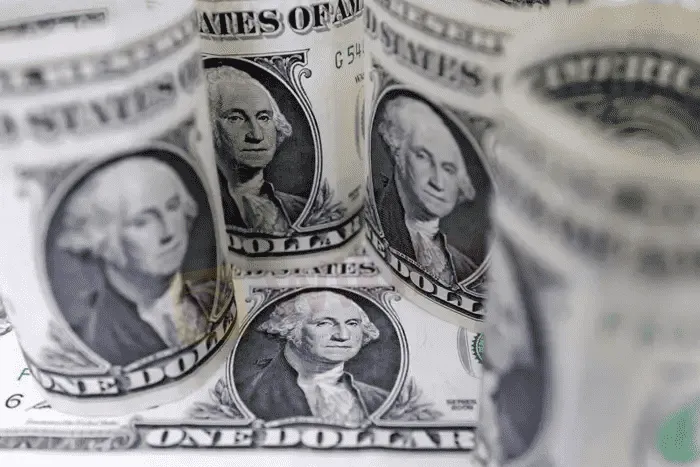简体中文
繁體中文
English
Pусский
日本語
ภาษาไทย
Tiếng Việt
Bahasa Indonesia
Español
हिन्दी
Filippiiniläinen
Français
Deutsch
Português
Türkçe
한국어
العربية
Dollar gains as traders gird for higher U.S. rates
Abstract:The dollar was on the front foot on Thursday after Federal Reserve Chair Jerome Powell signalled U.S. rates would likely rise further than expected, disappointing traders’ hopes for a change in tone, and shifting the focus to Friday’s jobs data.

The dollar hit a week-high of $0.9810 per euro in early Asia trade and is eying its best week in more than a month, although a Bank of England meeting and U.S. labour data loom before the close of trade in New York on Friday.
The Fed raised its benchmark funds rate by 75 basis points to 3.75-4% as widely expected. The dollar initially fell on hints in the Fed‘s statement of smaller hikes ahead, but it was bid after Powell’s hawkish stance about the trajectory rates.
“Incoming data since our last meeting suggests that the ultimate level of interest rates will be higher than previously expected,” Powell told reporters, adding: “It is very premature to be thinking about pausing…we have a ways to go.”
The dollars gains knocked its New Zealand peer from a six-week high and back below its 50-day moving average to $0.5890. The Australian dollar fell 0.7% overnight and slipped further to a week-low of $0.6332 on Thursday. [AUD/]
“Strong hawkish messaging from the Fed chair pours cold water on premature dovish pivot expectations,” said analysts at Citi, who recommend staying long the U.S. dollar in Asia.
“This shall further embolden expectations of policy divergence with a much hawkish Fed relative to other central banks around the world. Further tightening of financial conditions shall put downward pressure on risk assets and strengthen the dollar.”
Japans yen was notably firm in the face of dollar gains, and has held at 147.90 per dollar, prompting speculation of possible help from official intervention.
Japan spent a record $42.8 billion propping up the yen last month via a series of unannounced yen purchases, on top of almost $20 billion spent in September. Japanese markets were closed for a holiday on Thursday, thinning Asian currency trade.
Sterling fell 0.8% on the dollar overnight to sit at $1.1378 in early deals on Thursday. Markets are priced for the BoE to deliver its biggest hike since 1989 and raise interest rates by 75 basis points later in the day.
“The risk is that the BoE maintains the current pace of tightening and delivers a 50bp hike,” said Commonwealth Bank of Australia analyst Kim Mundy. “A 50bp hike would be considered ‘dovish’ by market participants and can push sterling lower.”
The U.S. dollar index stood at 112.13, its highest in seven sessions. Chinas yuan was hovering near record lows in offshore trade at 7.3408 per dollar, and other Asian currencies were under pressure.

Disclaimer:
The views in this article only represent the author's personal views, and do not constitute investment advice on this platform. This platform does not guarantee the accuracy, completeness and timeliness of the information in the article, and will not be liable for any loss caused by the use of or reliance on the information in the article.
Read more

IG 2025 Most Comprehensive Review
This article evaluates the broker from multiple dimensions, including a basic introduction, fees, safety, account opening, and trading platforms.

EXNESS 2025 Most Comprehensive Review
This article evaluates the broker from multiple dimensions, including a basic introduction, fees, safety, account opening, and trading platforms.

Top Profitable Forex Trading Strategies for New Traders
Know profitable Forex strategies for beginners, including risk management tips, best currency pairs, technical analysis tools, and timeframe selection.

WikiFX Review: Is IVY Markets Reliable?
IVY Markets, established in 2018, positions itself as a global brokerage offering a diverse range of trading instruments, including Forex, Commodities, Cryptocurrencies, and Stocks. The platform provides two primary account types—Standard and PRO—with a minimum deposit requirement of $50 and leverage up to 1:400.
WikiFX Broker
Latest News
Germany's Election: Immigration, Economy & Political Tensions Take Centre Stage
WikiFX Review: Is IVY Markets Reliable?
eToro Adds ADX Stocks to Platform for Global Investors
Why Do You Keep Blowing Accounts or Making Losses?
B2BROKER Launches PrimeXM XCore Support for Brokers
Checkout FCA Warning List of 21 FEB 2025
Google Bitcoin Integration: A Game-Changer or Risky Move?
IG 2025 Most Comprehensive Review
It is Not True Love | Tips on Avoiding Romance Scams
XTB Secures Chilean License, Expands Latin America Footprint
Currency Calculator






